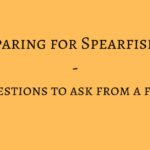A Celebration of Herring
Typically between February and March, BC’s coastline will host my favourite event in the world, and I wish we could make it a week long public holiday. Weeks long maybe. However long it lasts; it is worthy of a full stop to watch it from start to finish. It is the great spawning event of the pacific herring.
For those of you not up to your otoliths in fish nerddom, herring are small schooling fish. They’re low trophic level fish (aka a lot of things want to eat ‘em) and are part of a group referred to as “Forage Fish”. Forage fish include some names you’ve probably heard before such as anchovies, pilchards, sardines, and shad. They’re highly prized for their omega rich oily bodies. Pilchards can be 30% oil. Some forage fish can have such high oil content percentages that once dried, can be burned like candles. Other forage fish include sandlace and surf smelt, and of course herring. There’s so much about herring to take in. They fart to communicate in dark or murky waters (my favourite fact). They can live around 15 years on the BC coast, but as you move further north, their life spans stretch to 20 years. A big one is around a foot long at full maturity, but most are much smaller, and are becoming increasingly so like many fish. Global trends are showing a decreases in fish overall size as well as age of maturity due to the inescapable pressure from human predators. Each year, herring migrate to shallow shores for mass spawning events, turning the sea a milky turquoise from eggs and milt. Kilometers of coastline become an energy filled brightness that can be observed from space. There are reports that older herring lead the way, passing knowledge on to younger generations of tiny fish. Their spawning is accompanied by symphonies of calls, barks, and songs from the accompanying eagles, gulls, seals and whales that feast upon both the herring and their eggs.
If learning about the herring spawn from the herring’s perspective, the whole mess can seem fairly futile. If a female herring reaches her full mature potential, if she survives long enough to reach a large enough size to produce her full capacity of eggs and has a successful year of hunting to fatten up those embryos with with energy stores, she may produce 20,000 eggs. With a 1/10,000 survival ratio, that whole effort may give 2 adult herring per spawning event. However, if viewed from the perspective of the larger ecosystem, this is the jumpstart, the burst of energy, that brings the whole dance to life. Whales and birds migrate for herring. Wolves, otters, seals and sea lions. The reproductive efforts of land and sea animals are timed to benefit from this annual influx of nutrients. Rarely have humans quantified the value of a natural event, system, or species in terms of dollars, but many of our fisheries – including salmon and hake – are fed by herring. It has been calculated that were bees to disappear, the cost of pollinating would be in the billions. Herring feed the system in a similar way. 60% of the Chinook salmon diet is comprised of herring, which in turn feeds larger beings, like those big toothy black and white ones that capture our hearts and minds.
The silvery beauty of herring is captivating and made through use of a compound that exists in our DNA, in the eyes of scallops and crocodiles, in fake pearls, and likely in your shampoo and conditioner. Guanine was isolated from sea bird poop in 1844 by a german chemist by the name of Unger. This is in fact where Guanine gets its name. Guano is sea bird and/or bat poop ( I’m embarrassed to say I first learned about guano through Ace Ventura: When Nature Calls, but there is a wonderful podcast by 99% Invisible called Guano Mania which I strongly recommend!). It is rich in potassium, nitrogen, and phosphate, which are key elements for plant growth, and thus valuable for agriculture. It was so valuable that nations fought for and claimed land over access to it. Guanine in a crystalline form is used by many animals for a variety of functions. Layers of Guanine create mirrors in the eyes of scallops and crocodiles. The high refractive index of Guanine crystals is used by chameleons to change colour. In herring, and many other fish species, embedded guanine crystals in their scales give them that shimmering fluid silvery appearance that they use to camouflage.
While humans have been unable to engineer such good results with Guanine crystals in the lab, guanine is used in cosmetics and plastics. It is used in eye shadow to give sparkle and shimmer, in plastics to make fake pearls with more realistic sheen. In your shampoo and conditioner, hand soaps and other products, it gives that pearly shine. If you’ve ever learned about DNA, you may remember guanine as one of the 4 essential nucleobases (Cytosine, thymine, and adenine are the other 3) and thus it is part of every cell in your body.
Public holidays in our north American culture are based in religious events or the celebration of public figures. We don’t have holidays for natural systems or seasons. But this next month, if you have the opportunity to see herring spawning, take it in for the incredible event that it is, and how lucky we are to still observe the small remnants of a once vast population. In the gathering of herring and their predators you can feel the whole ecosystem alive, the food chain all together birthing and dying. It is wild and noisy, messy and beautiful, and worth celebrating as much as possible.
By Laura Griffith-Cochrane, Curator at the Ucluelet Aquarium
Recent Posts




